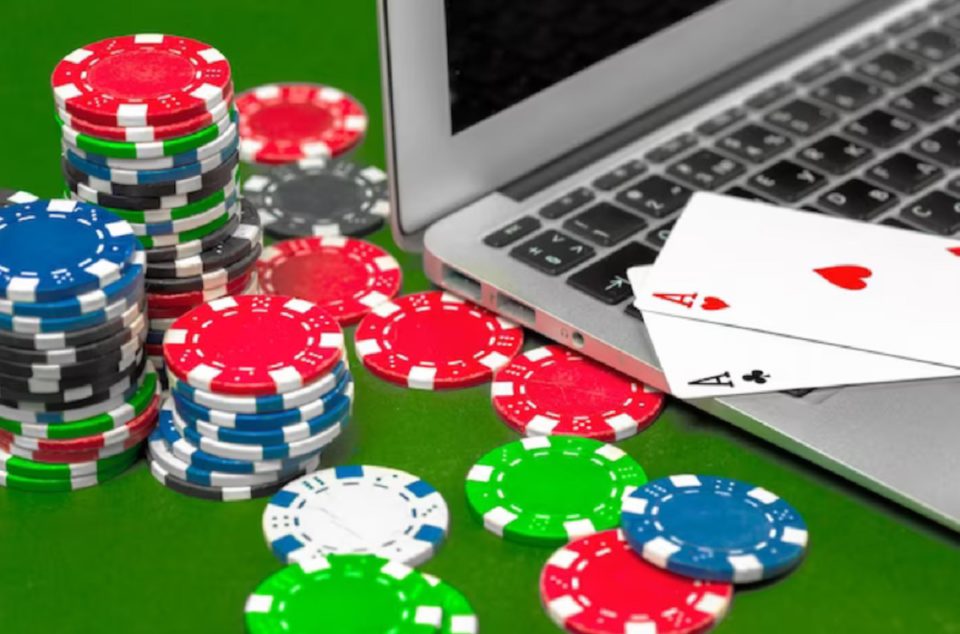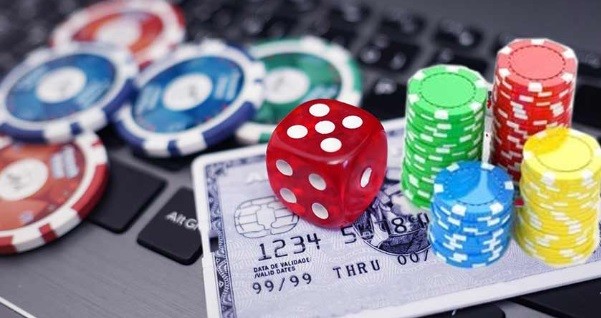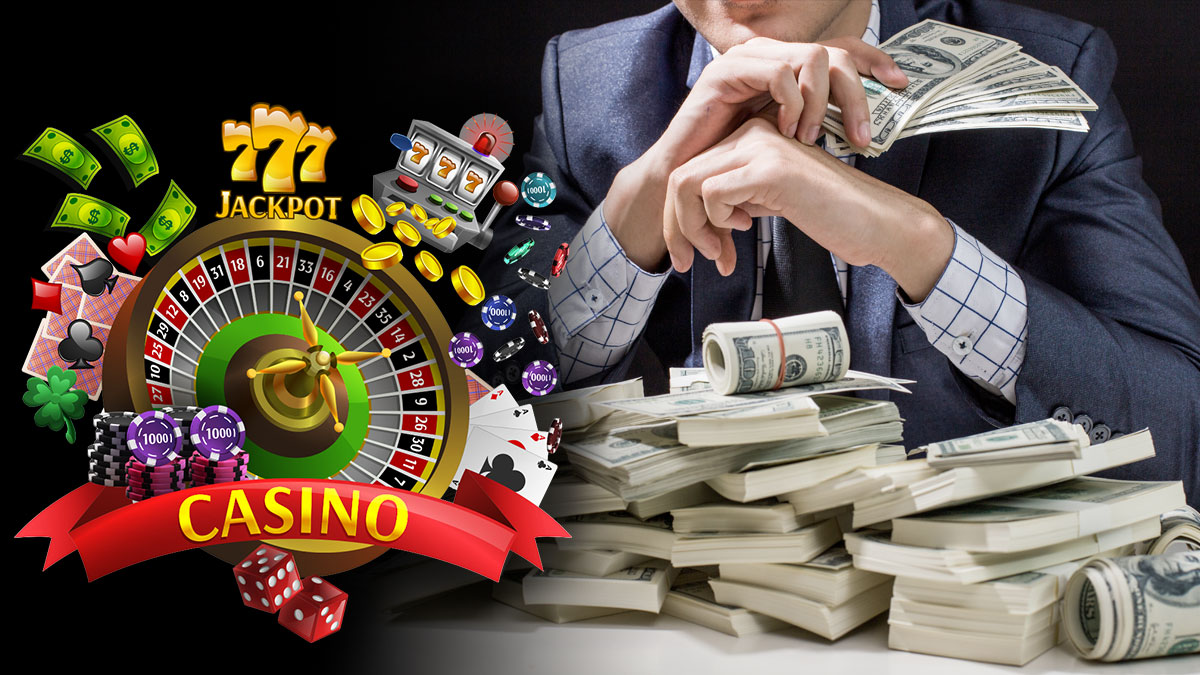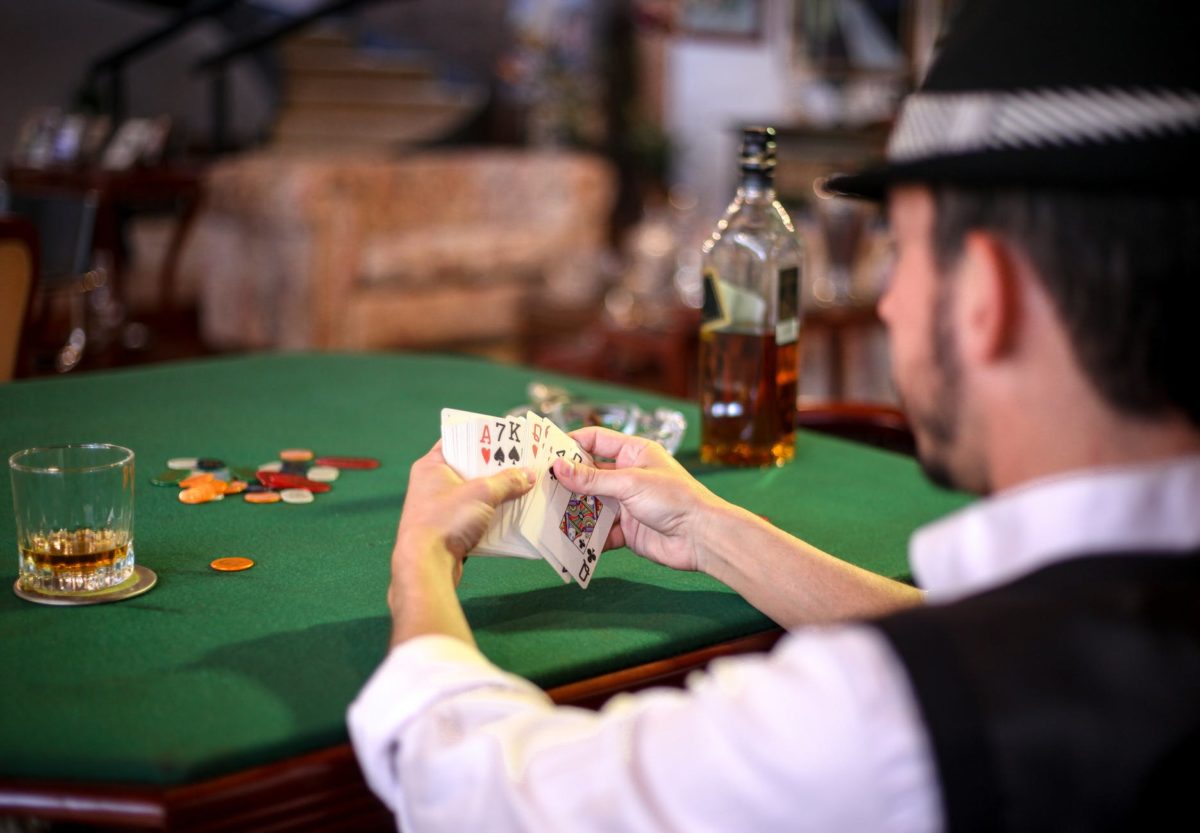Your traits of becoming a pro league casino player have now become a reality. Just register and click on play.

We know there are hundreds of platforms right now but we have customer support that makes us better than the rest.

Our service solely relies on gaming to an extent that we have become a pinnacle of providing peak casino hours.

Why wait any longer to start playing at the casino? Join now and get a huge bonus! You won’t find better gaming than this, plus we give your best chances for big wins. Why would you risk losing out on what is rightfully yours when there’s an easy way around it all – just by signing up with us today!.

We offer you a platform where you can play live casino games without having to make a deposit.

We also offer a range of bonuses, including welcome bonuses and loyalty bonuses, which give you extra money to play with.

We use state-of-the-art encryption technology to ensure that your financial information is safe and secure.
Your knowledge will rise only if you stay in touch with the rest of the gambling and betting industry.
Welcome to the world of online gambling for real money, where the thrill of the casino meets the convenience of the digital age.
In this article, we will explore the advantages of engaging in real money gambling online casino, discuss strategies for maximizing your chances of winning, and shed light on the risks involved.
Furthermore, we will provide tips for responsible gambling and managing your finances, ensuring that you maintain control and power in your online gambling endeavors.

Online gambling for real money offers numerous advantages, such as convenience, access to a wide range of games, and the potential to win substantial sums of money trusted online casino Singapore. One of the key advantages of online gambling is its legality. In many countries, online gambling has been legalized, allowing individuals to engage in real money gambling activities without fear of legal repercussions. This has created a safe and regulated environment for players to enjoy their favorite games from the comfort of their own homes.
Additionally, online gambling provides access to a vast selection of popular real money gambling games. From traditional casino games like blackjack, roulette, and poker to innovative and immersive online slots, players have a plethora of options to choose from. These games are developed by reputable software providers, ensuring fairness and high-quality gameplay.
Moreover, the potential to win substantial sums of money is a significant draw for online gamblers. Online casinos often offer generous bonuses, promotions, and jackpots, increasing the chances of winning big. With the convenience of playing anytime and anywhere, players can capitalize on their skills and luck to potentially earn life-changing amounts of money.
Overall, online gambling for real money offers the perfect blend of convenience, access to a wide range of games, and the potential for significant financial gains. With its legality, popular game selection, and lucrative opportunities, online gambling is a powerful and enticing option for those seeking the thrill of gambling in the digital age.
When selecting an online casino for wagering with actual funds, it is crucial to carefully consider several factors to ensure a secure and enjoyable experience. One of the most effective ways to assess the reliability and trustworthiness of an online casino is by reading online casino reviews. These reviews provide valuable insights into the reputation, security measures, customer support, and overall user experience of different online casinos. By analyzing a variety of reviews, potential players can gain a comprehensive understanding of the pros and cons of each platform, enabling them to make an informed decision.
In addition to online casino reviews, there are several other factors to consider when searching for a trustworthy online casino. Firstly, it is essential to verify that the online casino is licensed and regulated by a reputable jurisdiction. This ensures that the casino adheres to strict standards of fairness and security. Additionally, players should look for online casinos that use advanced encryption technology to safeguard their personal and financial information.
Furthermore, it is important to assess the variety and quality of the games offered by the online casino. A wide selection of games, including popular options such as slots, blackjack, and roulette, ensures that players have a diverse range of options to choose from. The quality of the games is also crucial, as it determines the overall gaming experience and the chances of winning.

To increase your chances of winning in the world of online wagering, it is essential to adopt effective strategies that maximize your gameplay and minimize your risks. Two key strategies that can significantly improve your odds are proper bankroll management and strategic game selection.
Bankroll management is the practice of effectively managing your gambling funds. It involves setting a budget for your gambling activities and sticking to it. This not only helps you avoid overspending but also ensures that you have enough funds to continue playing in the long run. It is recommended to allocate a specific portion of your overall budget to online gambling and never exceed that limit.
Game selection is another crucial aspect of successful online gambling. It involves carefully choosing the games that offer the best odds and highest potential returns. Researching and understanding the rules, strategies, and payout percentages of different games can help you make informed decisions. It is advisable to focus on games that have a low house edge, such as blackjack or video poker, rather than games with high house edges like slots.
Understanding the potential risks and liabilities associated with wagering with actual funds on the internet is crucial for individuals considering engaging in this form of entertainment. Online gambling has become increasingly popular, offering convenience and accessibility to players. However, it also poses several risks that players need to be aware of.
One of the significant risks associated with online gambling is the psychology of gambling addiction. The allure of winning big and the excitement of the game can lead individuals to develop a gambling addiction. This addiction can have severe consequences on their personal and financial well-being. It is essential for individuals to recognize the signs of addiction and seek help if necessary.
Another risk is the presence of online gambling scams. With the rise of online gambling, there has also been an increase in fraudulent websites and operators. These scams can range from rigged games to non-payment of winnings. To spot and avoid online gambling scams, it is essential to do thorough research on the website or operator before depositing any funds. Look for reputable licenses and certifications, read reviews and forums, and check for secure payment methods.
Responsible gambling entails implementing effective strategies to manage finances and ensure that individuals maintain control over their spending habits and prioritize financial well-being.
When engaging in real money online gambling, it is crucial to set clear limits to prevent excessive spending and potential financial harm. Here are some tips for setting gambling limits and managing your finances responsibly.
Firstly, it is essential to establish a budget for your gambling activities. Set aside a specific amount of money that you can comfortably afford to lose without negatively impacting your financial stability. Stick to this budget and avoid chasing losses by setting strict loss limits.
Additionally, self-exclusion programs are of utmost importance for responsible gambling. These programs allow individuals to voluntarily exclude themselves from gambling activities for a specified period. They provide a valuable tool for individuals struggling with controlling their gambling habits, ensuring they take a break and seek help if needed.
Furthermore, regularly reviewing your gambling habits and assessing the impact on your finances is crucial. Keep track of your wins and losses, and if you notice patterns of excessive spending or negative consequences, seek professional help or support groups.
In conclusion, online gambling for real money offers numerous advantages, including convenience, a wide variety of games, and the potential to win substantial amounts of money.
However, it is essential to choose a reputable online casino and employ effective strategies to maximize your chances of winning.
It is also crucial to understand the risks involved and practice responsible gambling to ensure the enjoyment of the activity while managing your finances effectively.
In the ever-evolving world of online gambling, e-wallets have become a popular and convenient method for funding casino accounts online casino malaysia free credit. This article explores the benefits of using e-wallets in online casinos, as well as how to obtain free credits for e-wallet casino games.
We will also discuss the top e-wallets available for free credit gambling and provide tips and strategies for maximizing these credits. Furthermore, we will examine the future of e-wallets in the online casino industry.

One of the advantages of utilizing e-wallets in online casinos is the convenience they offer for quick and secure transactions. E-wallets provide a secure and efficient method for players to deposit and withdraw funds from their online casino accounts. These digital wallets are equipped with robust security features, such as encryption technology and two-factor authentication, to ensure the safety of users’ personal and financial information. This level of security is crucial in the online casino industry, where players need to feel confident that their funds and sensitive data are protected.
In addition to security, e-wallets also offer convenience when it comes to online casino transactions. With an e-wallet, players can easily and quickly deposit and withdraw funds from their casino accounts, without having to disclose their banking or credit card details to the casino directly. This not only saves time but also provides an added layer of privacy for players. Furthermore, e-wallets often offer instant transfers, allowing players to start playing their favorite casino games without delay.
Overall, the security features and convenience provided by e-wallets make them an excellent choice for online casino transactions. Players can have peace of mind knowing that their funds are protected, while also enjoying the seamless and efficient payment process.
To obtain complimentary credits for digital payment method-based gambling platforms, individuals can explore various strategies and promotional opportunities offered by online gaming providers. One effective strategy is to take advantage of welcome bonuses and promotional offers that many e-wallet casinos provide to attract new players. These bonuses often include free credits that can be used to play popular e-wallet casino games.
When it comes to e-wallet security measures, reputable online casinos prioritize the safety of their players’ personal and financial information. They employ encryption technology to protect sensitive data and ensure secure transactions. Additionally, e-wallets themselves have their own security measures in place, such as two-factor authentication and transaction monitoring, to ensure the safety of users’ funds.
Popular e-wallet casino games include a variety of slots, table games, and live dealer games. Slot games are particularly popular due to their easy gameplay and potential for big wins. Table games like blackjack, roulette, and baccarat are also commonly found in e-wallet casinos, offering players the excitement of traditional casino games in a digital format. Live dealer games, where players can interact with real dealers through a live video stream, are gaining popularity as well.
When considering digital payment method-based gambling platforms, it is important to be aware of the top e-wallet options available for secure and convenient transactions. E-wallets have become increasingly popular in the online gambling industry due to their ease of use and enhanced security features. Compared to traditional payment methods such as credit cards or bank transfers, e-wallets offer a more streamlined and efficient payment process.
One of the top e-wallets for secure online transactions is PayPal. With its robust security measures and reputation as one of the most trusted payment providers, PayPal ensures that your financial information remains protected while making transactions on gambling platforms.
Another popular e-wallet option is Skrill. Skrill offers a wide range of features, including instant deposits, withdrawals, and low transaction fees.
E-wallets provide an added layer of security by acting as intermediaries between your bank account or credit card and the online gambling platform. This helps to protect your sensitive financial information from potential data breaches or unauthorized access. Additionally, e-wallets offer the convenience of instant transactions, allowing you to quickly deposit funds into your gambling account and start playing.
Tips and strategies for maximizing the value of digital gambling credits can help players make the most of their e-wallet transactions. When it comes to maximizing e-wallet rewards and managing your e-wallet casino budget, there are several key strategies to consider.
Firstly, it’s important to carefully choose the e-wallet platform that offers the best rewards for your gambling activities. Look for e-wallets that offer cashback or loyalty programs specifically tailored to online gambling. This way, you can earn additional credits or bonuses with every transaction.
Secondly, it’s crucial to set a budget and stick to it. Determine how much you are willing to spend on gambling and only transfer that amount to your e-wallet. This will help you avoid overspending and keep your gambling activities in check.
Furthermore, take advantage of any promotional offers or bonuses that the e-wallet platform may provide. These can include sign-up bonuses, referral bonuses, or special promotions for specific games or events. By utilizing these offers, you can increase your e-wallet balance and get more value out of your gambling credits.
Lastly, keep track of your transactions and monitor your e-wallet balance regularly. This will allow you to stay aware of your spending habits and make adjustments if necessary.
The rapid advancement of technology and increasing consumer demand for convenience and security suggest a promising future for digital payment methods in the online gambling sphere. One significant development in this area is the impact of blockchain technology on e-wallets in online casinos.
Blockchain technology has the potential to revolutionize the way transactions are conducted in the online gambling industry, offering enhanced security, transparency, and efficiency. By utilizing blockchain technology, e-wallet transactions can be securely recorded on a decentralized ledger, ensuring that all transactions are transparent and tamper-proof. This eliminates the need for intermediaries and reduces the risk of fraud or hacking. Additionally, blockchain technology can enable faster and cheaper transactions, as it eliminates the need for traditional banking processes.
However, as with any digital payment method, there are security concerns associated with e-wallet transactions in online casinos. Hackers may attempt to breach e-wallets and gain unauthorized access to users’ funds. To address these concerns, online casinos are implementing various security measures, such as multi-factor authentication, encryption, and secure servers.
Overall, the future of e-wallets in the online casino industry looks promising, thanks to advancements in technology and increasing security measures. With the integration of blockchain technology and the implementation of robust security solutions, e-wallets offer a convenient and secure way for players to transact in online casinos.
In conclusion, e-wallets offer numerous benefits for online casino players. This includes convenience, security, and speed of transactions. By utilizing e-wallets, players can also access free credits for casino games. This allows them to enjoy gambling without risking their own money. Some of the top e-wallets for free credit casino gambling include PayPal, Skrill, and Neteller.
By following tips and strategies, players can maximize their e-wallet casino credits and enhance their overall gaming experience. E-wallets are expected to play a significant role in the future of the online casino industry. They will provide even more convenience and innovation for players.
In the rapidly evolving world of online gambling, e-wallet casinos have emerged as a popular and convenient option for players in Malaysia. Offering a seamless and secure payment experience, these platforms provide the added benefit of free credit promotions.
This article aims to explore the advantages of e-wallet casinos in Malaysia, guide readers on how to obtain free credit ewallet casino singapore, highlight top casino games available, and offer tips for maximizing this free credit.
Additionally, we will discuss the future prospects of e-wallets in the Malaysian online gambling industry.

E-Wallet casinos in Malaysia offer numerous advantages, making them a preferred choice for players seeking convenient and secure online gambling experiences.
One of the key advantages of using e-wallets for online gambling in Malaysia is the convenience it provides. With an e-wallet, players can easily deposit and withdraw funds from their casino accounts without the need for bank transfers or credit cards. This eliminates the hassle of waiting for transactions to be processed and allows for instant access to funds.
Another advantage of e-wallet casinos in Malaysia is the added security features they offer. E-wallets use advanced encryption technology to protect user’s personal and financial information, ensuring that their transactions are safe and secure. Additionally, e-wallets provide an extra layer of security by allowing users to set up two-factor authentication, further protecting their accounts from unauthorized access. This gives players peace of mind knowing that their funds and personal information are well protected.
Furthermore, e-wallets often offer additional bonuses and rewards for using their services in online casinos. Players can earn cashback, loyalty points, or even exclusive promotions when using their e-wallets for online gambling. This adds extra value to the overall gambling experience and can increase the chances of winning big.
In order to obtain additional funds for use at online gambling establishments, players can take advantage of promotional offers and incentives provided by digital payment platforms. E-wallet casino Malaysia promotions and bonus codes are a popular way for players to receive free credit and enhance their gaming experience.
E-wallets have become increasingly popular in the online gambling industry due to their convenience and security. They allow players to store their funds digitally and make quick and hassle-free transactions. Many e-wallet providers in Malaysia offer special promotions and bonus codes specifically for online casino players.
To get free credit at e-wallet casinos in Malaysia, players can look for promotional offers and bonus codes on the e-wallet provider’s website or through their mobile app. These promotions may include free credit upon sign up, deposit bonuses, or even cashback on losses. Players can also keep an eye out for exclusive promotions and bonus codes from online casinos that partner with specific e-wallet providers.
The diverse range of online gambling games available in Malaysia’s e-wallet casinos cater to various preferences and offer thrilling entertainment options for players. With the rise of e-wallets and the convenience they offer, more and more Malaysians are turning to these platforms to enjoy their favorite casino games.
When it comes to the top e-wallet casino platforms in Malaysia, there are a few names that stand out. One of the most popular platforms is 918Kiss, which offers a wide selection of games including slots, poker, blackjack, and roulette. Another popular platform is Mega888, which also offers a variety of games and has gained a strong following among Malaysian players.
In terms of popular e-wallet casino games in Malaysia, slots are definitely at the top of the list. These games are easy to play, offer exciting themes and graphics, and provide the opportunity to win big. Other popular games include poker, blackjack, and roulette, which offer a mix of strategy and luck.
Overall, the top e-wallet casino platforms in Malaysia offer a wide range of popular games that cater to different preferences. Whether you’re a fan of slots, poker, blackjack, or roulette, there’s something for everyone to enjoy and have a thrilling gambling experience.
To make the most of the bonus funds provided by online gambling platforms, players can employ strategic approaches that enhance their chances of winning. Maximizing rewards and employing effective strategies for winning are essential when it comes to utilizing free credit at e-wallet casinos.
Here are some tips to help you make the most of your free credit and increase your chances of winning big.
Firstly, it is important to carefully read and understand the terms and conditions associated with the free credit offer. This will ensure that you fully understand the requirements and restrictions, allowing you to plan your gaming strategy accordingly.
Secondly, consider diversifying your bets. Instead of placing all your bets on a single game or outcome, spread your bets across different games. This will increase your chances of winning as you are not solely dependent on one game’s outcome.
Another effective strategy is to set a budget and stick to it. It is easy to get carried away when playing with free credit, but setting a budget will help you manage your funds and prevent excessive losses.
Furthermore, take advantage of any additional promotions or bonuses offered by the e-wallet casino. These can provide additional opportunities to win and maximize your rewards.
As the Malaysian online gambling industry continues to evolve, there is growing anticipation surrounding the future of e-wallets and their potential impact on the sector. E-wallets, also known as digital wallets, have gained popularity in recent years due to their convenience and security features. These digital payment solutions allow users to store and manage their payment information in one place, making online transactions seamless and hassle-free.
The impact of e-wallets on traditional payment methods in the online gambling industry could be significant. Traditional payment methods such as credit cards and bank transfers often come with long processing times and high transaction fees. E-wallets, on the other hand, offer faster and more cost-effective payment options. By integrating e-wallets into their platforms, online gambling operators can provide their customers with a more efficient and streamlined payment experience.
However, there are challenges in implementing e-wallets in the online gambling industry. One of the main challenges is ensuring the security of transactions and preventing fraud. E-wallet providers need to have robust security measures in place to protect user information and funds. Additionally, regulatory compliance is another challenge, as different countries have different regulations regarding online gambling and digital payments.
Despite these challenges, the future of e-wallets in the Malaysian online gambling industry looks promising. With their convenience, speed, and cost-effectiveness, e-wallets have the potential to revolutionize the way payments are made in the sector. As the industry continues to embrace digital innovation, e-wallets are likely to become an integral part of the online gambling experience in Malaysia.
In conclusion, e-wallet casinos in Malaysia offer numerous benefits such as convenience, security, and efficiency.
By using e-wallets, players can enjoy the ease of making deposits and withdrawals, while also ensuring their financial information remains protected.
Additionally, e-wallet casinos often provide opportunities for players to earn free credit, allowing them to try out various games without risking their own funds.
As the online gambling industry continues to evolve, e-wallets are expected to play a significant role in its future development in Malaysia.
Online Casino Promotions
An online casino promotion can be of many different types, but the three most
common are free spins, no deposit bonuses, and tell-a-friend incentives. Read on to
learn more about these different types of incentives, and how they can benefit you.
A casino promotion can also include revenue share gambling online, play money, or free spins. The
rewards may vary, but the more you play, the better! A casino’s referral program is
also a great way to encourage players to refer friends and family.

Free spins
A free spins online casino promotion is a great way to test a game before you invest
your own money. These online casino promotions are typically credited to your
account automatically and can be used on any game. You can use the free spins for
a set period of time, but there are limitations to these offers. Many of these
promotions also target specific demos, so make sure to check the limitations. Listed
below are some important considerations when choosing a free spins online casino
promotion.
Reload bonuses
Reload bonuses are extra play money that you can use in your favorite online
casinos. Usually, they give you free spins or other bonuses that are worth real
money. These can be withdrawn or used as a deposit. Reload bonuses are available
to all casino players, and most casinos do not have a maximum amount. It is a good
idea to read the terms and conditions of reload bonuses to ensure you understand
exactly how much you can win.

No deposit bonus
A no deposit bonus is an excellent online casino promotion that allows players to try
out a casino without depositing any money. Unlike deposit bonuses, no deposit free
spins can be used to win real money. As long as you keep your winnings, a no
deposit bonus is an excellent way to try a casino before you make a deposit. No
deposit free spins can be used on a variety of games, but most of them are
restricted to slot games.
Refer-a-friend incentive
Incentives to refer friends are becoming increasingly common in online casinos.
Referred players can earn cash bonuses or match bonuses from online casinos.
Many casinos also offer refer-a-friend free spins. Referring friends is a great way to
increase your bankroll and wagering potential. The best part about referral bonuses
is that you don’t have to make a deposit. Simply send your friend’s referral link to
them and watch their bankroll grow.
Daily deals
The Daily Deals online casino promotion can be a great way to enjoy free cash at an
online casino. These promotions are often given for various tasks such as playing
new games or making a deposit. They don’t always require promo codes, and they
only take a few minutes to claim. These free cash offers are also available in various
forms, including bonus cash, free spins, and deposit bonuses. Read on to learn more
about these promotions!
Bet Casino Online
The best bet casino online is one that offers many features and benefits for players.
Its games are very diverse and there are several different tables to choose from. It
also offers several tournaments judiqueen918. You can also get free credits that you can use in
real money games. You can also use these credits for bonuses, free spins, or
freerolls. The list goes on. However, it is important to note that you must bet a
minimum amount to qualify for a freebie or bonus spin.

Bonuses
You can sign up for an account at Bet casino online to enjoy a number of exciting
bonuses and promotions https://www.1bet168.com/my/en-us/blog/judiqueen918-ewallet-casino-review. In addition to bonuses, the site also offers a wide variety of
deposit methods. With many options, you can easily find the right casino for your
needs. Below is an overview of the benefits of bet casino online. This online casino
has a safe and convenient website, so you can enjoy all of the benefits that online
gambling offers.

Depositing money
Fortunately, there are a number of options for depositing money at online gambling
sites. Credit cards, for example, are one of the most popular methods. Not only are
these methods quick and easy to use, but they are also generally accepted by the
vast majority of online gambling sites. You can also withdraw your winnings using
your debit card if you choose to. But, there are some pitfalls to remember when
using a debit card to deposit money at an online gambling site.
Things You Should Know About
Online Betting
When you are looking for a place to make your bets, online betting might be the
right choice for you. The process is fast and convenient sg online casino free credit, and it should only take you
a few minutes to set up an account and deposit funds. There are also a variety of
sports betting options available. Here are some things you should know about online
betting. These include: Signup bonuses, Parlay bets, Over/Under betting, and more.

Getting the best odds on online sports betting
In order to get the best odds on your online sports bets, you need to follow the
movements of the odds. While odds are computer-generated these days, the
direction they move still reflects human judgment. Even if you don’t have a
statistical background, you can still use the odds to your advantage. Look for
reasons not to bet against smart money. Whether you bet on your favorite team or a
team you don’t know, you’ll want to bet on a game that has the best odds.
Signup bonuses
Signup bonuses for online betting are a great way for new players to try their luck at
the games. Many online sportsbooks will advertise their signup bonus as one of their
most attractive offers. These are often offered in the form of cash or free bets. This
way, new players can test the waters before committing to depositing money and
playing for real money. Signup bonuses are typically the largest bonus offered to
new depositors.

Over/Under betting
Over/under betting is a good way to place wagers on different games. The betting
market usually prices overs slightly over, but this is not necessarily the case. You
need to pay attention to certain factors that might influence the outcome of a game.
For example, the Arizona Cardinals are averaging six points per game through the
first half of the season. This can help you place a wager on overs if they are more
likely to score a touchdown.
Parlay bets
When you place multiple bets on the same outcome, you’re making parlay bets.
These types of bets combine multiple predictions into one, with each bet being paid
off in full if they win. For example, you might place a bet on three or four NHL teams,
with a parlay of those teams winning the first two games and the third game. Each
individual bet will pay off for three to one if the entire parlay is successful. The odds
are higher for a multi-leg parlay, but there’s also more risk involved with the bet.
Teaser bets
Teaser bets when betting online are a great way to increase your winnings without
increasing your overall risk. These types of bets are typically categorized as “exotic”
and are offered by most sportsbooks. While they aren’t ideal for every game, they
are especially effective when the game is not easily predicted. Teasers are best used
for games where a single team could win by six points or more.
Futures bets
Futures bets are bets on a major event in the future, rather than on an individual
game or match. These bets are generally resolved months in advance and are based
on the longer-term results. For example, you can place a bet on who will win the
Super Bowl, but not on the individual awards. You can also bet on whether a certain
team will win the English football premiership.
The Different Types of Casino Online
Bonus
If you are looking for a casino online bonus, there are several different types to
choose from. These types include deposit bonuses, no deposit bonuses, seasonal
bonuses, and VIP programs. To make the most of your casino online bonus, make
sure to read the rules carefully. Some platforms send you a verification link to your
email address free online casino games. The verification link will allow you to play games and make deposits
and withdrawals. Casino online bonuses come in the form of welcome gifts.
However, these may not be the same as what you could get if you played at a land-
based casino.

No deposit bonus
A no deposit casino bonus is a way to try a casino’s games without having to make a
deposit. These bonuses are excellent for beginners and those who want to test out
new games before committing to a real account best online casino au. No deposit bonuses are often
offered by new online casinos to attract new players. These bonus programs often
include free games, training, and bonuses for trying new games.
In general, these bonuses are modest, but they still have the potential to earn
players a nice chunk of cash. Make sure to choose a no deposit casino that offers
generous free spins. A good rule of thumb is to look for casinos that offer at least 50
spins to get the most value from the no deposit bonus.
Deposit bonus
When you’re playing at an online casino, you may be wondering if you can get a
deposit bonus. In the past, you had to enter a special code when you deposited
money to receive a bonus. These codes usually consisted of a special combination of
letters and numbers. These days, however, the process is much simpler thanks to
technology.
Before you start playing, you should review the terms and conditions of the deposit
bonus offered by a casino. Deposit bonuses are usually given only to people who
deposit a certain amount of money. The terms and conditions of these bonuses vary,
so it’s important to carefully read the fine print. Generally, a high deposit match
bonus means more free money.

Seasonal bonuses
If you enjoy playing slots and other online casino games, seasonal casino online
bonuses are a great way to maximize your winnings. However, these promotions are
usually subject to the terms and conditions of the casinos, and players must opt-in to
qualify for them. One of the most popular casino online bonuses is the free spins
bonus. This promotional feature has been shown to increase slot machine player
loyalty and success.
These promotions are often themed and are offered in conjunction with a specific
event or season. The Halloween promotion at Rizk, for example, gives out EUR1000
every day to casino players. The promotion runs from October 25th through the
31st.
VIP program
An online casino’s VIP program is an excellent way to reward players. It can make
playing casino games even more fun because you can earn extra rewards. It is
important for casinos to have a VIP program because losing these big-ticket clients
can have a huge impact on revenue. The casino’s VIP program is a rewards program
that offers players points and sometimes tiers to advance their status.
Each casino’s VIP program may have different rules and requirements, but they all
offer the same idea: you earn points for playing casino games. These points are then
exchanged for goodies. Online casinos will automatically keep track of how many
points you earn when you play their games. However, offline casinos will need you to
use a special card that you put in a slot to track your points. In order to use the
program, you must provide the card to customer service and dealers.
Choosing a Betting Casino
There are several betting casinos to choose from. These include Bovada, FanDuel,
BetOnline, and Mohegan Sun. Each offers a different set of betting options. When
choosing between these sites online casino malaysia, it’s important to remember that the odds at a casino
reflect the chance of an event happening. For example, if you bet that a coin will fall
over twice, you can expect to win two out of three times.

Bovada
Bovada is a good place to start if you are interested in football betting. It has solid
football promotions and offers a large sign-up bonus joker12. However, it is important to
note that it is not licensed by any authority, which means that you may not be able
to play from certain countries. As for payment methods, Bovada accepts credit cards
and debit cards but you should be aware that you may incur fees depending on your
bank.
In addition to offering a number of deposit and withdrawal methods, Bovada also
accepts cryptocurrency. Most major credit cards are accepted by the site, and you
can also deposit using vouchers and bonus codes. Unlike some other online casinos,
Bovada does not publish any limits for wagers.
FanDuel
If you’re looking to find a sportsbook in New York City, look no further than the
FanDuel betting casino. The sportsbook is located in a 5,310 square foot retail space
adjacent to MetLife Stadium. The casino accepts bets on all major U.S. sports, as
well as professional sports.
This sports betting and daily fantasy site is expanding into Pennsylvania. It also
offers a casino under its Betfair brand in New Jersey. It’s possible that the two
products will combine to create a unified gaming experience in Pennsylvania.

BetOnline
BetOnline Casino is a great online casino that offers a huge selection of games.
Whether you’re looking for classic table games or the latest slots, you’ll find it at
BetOnline. You can find hundreds of different games from a variety of publishers and
developers. There are a few games that you’ll find on BetOnline’s lobby, but you’ll
have to register to play them.
In addition to a number of different game options, BetOnline is also one of the most
secure gaming websites. The casino uses a Random Number Generator (RNG) to
ensure fair outcomes. It also uses SSL encryption technology to ensure that
information is safe from unauthorized access.
Mohegan Sun
The Mohegan Sun is a unique entertainment destination located in southeastern
Connecticut on 185 acres along the Thames River. It is home to three distinct
casinos, a world-class spa, golf course, and luxury hotel. The casino is located close
to New York City and just 15 minutes from Mystic Country museums.
The Mohegan Sun betting casino is a great option for online gambling, as it offers a
secure, safe, and reliable environment. It also offers a wide selection of games and a
flexible web platform.
How to Stay Safe and Legal When Gambling
Online
Internet gambling is not legal. There are many factors to consider when making a decision to
gamble online. There are risks, however, and you should only gamble after you have carefully
considered the risks. Problem gambling and addiction to gambling are also important issues to
be aware of singapore online betting. Thankfully, there are ways to stay safe and keep your gambling online within the
bounds of the law. Listed below are some of the tips to keep in mind when gambling online.

Problem gambling
Self-exclusion is an option that New Jersey residents have to restrict their internet gaming
activities. They can choose to do so for one year or up to five years if they choose to close their
account. Some sites even offer options to limit activities or the amount of money they gamble.
They also have a helpline at 800-GAMBLER that operates around the clock. Problem gamblers
can also call this number and attend phone meetings. Ultimately, they can make an informed
decision about their gambling habits and protect their financial future.
Trends in Internet gambling
Trends in Internet gambling include the emergence of new technologies that allow for more
convenient wagering. For instance, in the past, video streaming was impossible without high-
speed internet connections. Nowadays, real-time streaming is possible all over the world, and it
is used in applications like Skype, Zoom, and FaceTime as well as sports betting. Other trends
include live casino gaming, where players engage in card games with live dealers. Another
exciting trend is Lightning Roulette, which has transformed classic roulette by offering huge
payouts.

Identifying a legit site
Whether you’re looking for an exciting bonus or a trusted casino with safe payment options,
there are several tips to help you identify a legit online gambling site. Legitimate online casinos
are licensed and regulated by third-party gambling regulatory authorities, so you can be sure
you’re playing at a legit casino. These regulatory bodies also scrutinize the games on a casino’s
website and its banking methods. Finally, make sure the site is registered with the relevant
regulatory bodies.
Legalization of Internet gambling
Prohibition of Internet gambling is not going away anytime soon, and many argue that regulation
and legalization will bring more security. But the question of whether these two strategies will
work together remains unanswered. Prohibition alone will not make gambling illegal; legalization
will put the benefits of competition within the rules of the law. Whether regulation and legalization
are the best options will depend on which approach works for each country. Hopefully, the
legalization of Internet gambling will be a positive step.
Signs of a problem with Internet gambling
Gambling addiction is often difficult to spot, especially online. The person suffering from a
gambling problem may not even realize that he has a problem. He might try to borrow money
from friends and family to fund his gambling habit. His spending may be out of control. He may
even lie to his friends about his gambling habits. Signs of a problem with Internet gambling
include lying about the amount of money he spends or the frequency with which he gambles. In
addition to the above, Internet gambling addiction can result in a growing debt problem and an
uncontrollable urge to pay off his debts.
How to Redeem Credit Casino Dollars
You can redeem credit casino dollars into cash or gift cards by depositing the same amount on
the same casino account. The best part is that these credits do not expire and you can spend
them on more gambling. You can also use them to purchase free tickets to your favorite shows
or movies. The possibilities are endless casino Malaysia. Ultimately, you can redeem your casino credits into real
money to increase your bankroll. Listed below are some of the best ways to redeem your credit.

To redeem your credits, you must register and have a credit card with the same name as your
existing one Winbet2u Malaysia. You can use any amount of credits anytime. If you lose it, you can call the
customer support line and withdraw it. The process is usually fast. You can exchange the credit
for cash or free tickets to casino tournaments. But remember to read the terms and conditions of
any bonus you might have received. Once you’ve redeemed your credits, you can play with the
real cash in a real casino.
To redeem credit casino cash, you must first have a debit card or another card with the same
name as your credit card. Then, you need to have money in your existing bank account or credit
card. To redeem your credits, you must have a valid credit card. If you already have a credit
card, make sure you have the same balance in it. Usually, you can use your existing credit card
or bank account to withdraw your winnings. If you’re not sure about your financial situation, you
can use a credit card.
Once you have accumulated enough credits, you can use them to play more games, win more
money, or buy more items from your online casino. You won’t feel deprived of your funds.
Moreover, you can even sell your winnings for cash if you wish to. It’s a win-win situation for
everyone! The only thing you need to do is check the terms and conditions of any casino bonus
before using it.
To redeem credit casino cash, you must have a real account. If you don’t have a real account,
you can only use your virtual one. However, you can use your existing credit card to deposit
funds into your bank account. By redeeming your virtual money, you can play for real money at
any casino. Ensure that you have enough cash in your bank or existing credit card. You will
receive your bonus immediately after you have paid your fees and made a deposit.
In order to redeem your credit casino credits, you must log in with a valid credit card and deposit
money in the casino account. Once you’ve made the deposit, you need to pay the casino in
cash. If you’re using a debit card, you must use a different one for withdrawing your cash. This
should take just a few minutes. You can then play for real money using your credit card. It’s
important to read the terms of any bonus or requirements before you decide to redeem your
casino credits.